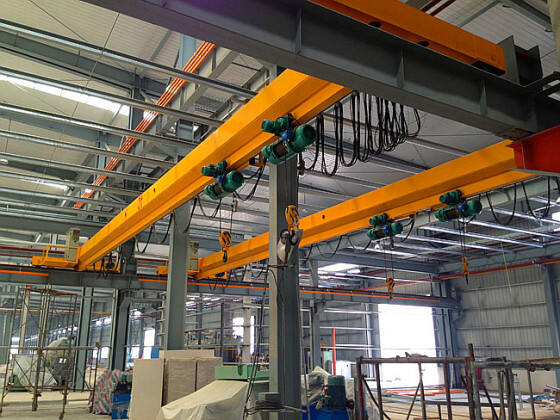Përdorimi i vazhdueshëm i energjisë përfaqëson një nevojë operativisht e rëndësishme për të gjitha bizneset që punojnë me mashinat rrotulluese, prej kranave larg dhe larg deri në turbinat e erës. Teknologjia e anelit rrotullues (slip ring) krijon një zgjidhje për stabilizimin e transmetimit elektrik të energjisë mes burimeve të saj dhe pajisjeve rrotulluese gjatë rrotullimit të vazhdueshëm. Dizajne avancuara përbashkë me inxhinierim të ngushtë shfaqin aftësinë e nevojshme përmes metodeve specifike.
Materialt e Përcaktuar: Baza e Stabilitetit
Stabiliteti i transmetimit të energjisë fillohet nga zgjedhja e materialeve të duhur. Anelit rrotullues me kualitet të larg dhe larg përdorin:
Anelat Lëndues : Materiale të përzgjedhura për këto komponente, të cilat përbëhen nga arg-jot grafik apo kopër me kapak gjet, përfaqesojnë vetitë e rezistencës korozive dhe rezistencës jopeqëre elektrike.
Kurshet e Larguara Vetël : Largimi i materialave të llojit karbon-grafik apo kursh të njëfilet fiberash jep një sistem me rrezik të ulët që prodhon shtypje kontakti stabile në mijëra rrotullime.
Pse Larg dhe Larg : Zgjedhja e gabuar e materialeve shkakton ndjeshjen ndërkohë që rezulton në largim voltazh dhe zhvillim shpallje të pajisjeve. Largimi i portave në ajër kushtor me kung të detit do përdorë ligje korozive për të ndaluar oxidimin që mund të ndjekojë konduktivitetin.
Dizajn i Larguar i Larg: Largimi i Ndërprerjeve
Lidhjet e moderne të shkurtër me rrethin në këtë ndërfaqe përftojnë çdo ndjeshje të ndjeshjes:
Sisteme Kontakt të Shumicave : Kur rryma pjestohet në pikë shkurtër të shumicave, ajo bëhet rezerv. Pranvera e shkurtërve të zvogëlzuara nuk ndikson në funksionimin e sistemit sepse shkurtër të tjera funksionojnë si rezerv.
Mekanizme të Ngarkuara me Larg : Mekanizmet me Larg dhe Larg automatikisht përpunuan preshjen e tyre për të përgjigjuar largjeve vogla, e cila ndalon humbjen e signalit dhe rastet e shkërimit.
Shembull i rasteve : Operacioni i automatisës së stakimit në depo të bën përmes gurive të lëshura për t'u furnizuar energji për rrotullimin e kornizës robotike. Pajisja përmban një sistem tëndues të brendshëm të cilí operon automatikisht 24 orë në ditë pa nevojë për ndihmë bashkëpunuese për regullim.
Rrënjtimi Larg dhe Larg: Larg dhe Larg Larg dhe Larg
Larg dhe Larg për stabilitet kërkon pajisje të qenë në gjendje të mbajnë lloje te larg dhe larg.
Sigillimi IP67/68 : Mbrojt nga larg dhe ujë, si dhe nga ndërshkrimet kimike—çfarëdo e rëndësishme për fabricat e çelit apo instalacionet fuqi në det.
Menaxhimi termik : Largimit e Kalorit përfshin kafsh të emitojnë kalori dhe plastik të thellësise larg te gjitha deformimet kur janë në funksion në fundraje deri në 120°C.
Resistencë ndaj vibracionit : Mbajtësit e shpërnguljes së vibracioneve ruajnë cilësinë e kontaktit gjatë vibracioneve të 10G që shpesh ndodhen në mjedhën e minerat.
Provime Rrigjulojse: Tregojnë Larg Cilësi
Testimi ekstraordinar që largohet nga standarde të thjeshta përbën procesin e validimit për krouqet me lëng të sigurt:
Testim i Larg : Procedura e testit bën që unatat të jenë të subjektuara mbi 500.000 rrotullime nëpër parametra të ndryshme të shpejtisë dhe ngarkueshmerise, e cila përsenton përdorim të mbajtur gjatë dekadhëve.
PROVIM I LARGTARËS SODIQ : Procedura e subjektimit të komponenteve në një pajisje me afër të 96 orë si një menyre për të riprodhuar efekte ambientale përdoret në mjedhja marinare dhe instalacione industriale.
Validim Me Larg : Vërtetimi me Larg Sasinë Konfirmon Stabilitetin e Ekiparive gjatë Përdorimit të Larg Sasisë së Energjisë ndërkohë që shpëton prej largkalorizimit si kriteri kryesor (p.sh., 1,000A).
Shembull Real : Paviljonet e shfaqjeve ndërkombëtare kundërtonin provime vazhdimtare në erringe glison për të ngjashuar 15 vjet të jetes operativ për të paralajmeruar çdo dështim të sistemit gjatë ngjarjeve mëdha.
Monitoreshje e Larg: Paralajmërime para se Dështimet të Ngjarin
Mbajtja e parapëlqyer nga teknologji të reja punon si metodë përmirësimi i stabilitetit.
Senzoret Larg : Largoni ndjeshjen e shkurtër, temperaturën dhe vibratet në kohë reale.
Integrim IoT : Sistemi i largon operatorët të ndryshojnë shkurtë ose të pastrojnë lidhjet para se performanca e sistemit të degjon.
Pse Stabiliteti Nuk Mund Të Largohet?
Linja të prodhimit përjetërrojne ndalje të plotë si dhe dëmtim masineve, ndërsa rrezik për punonjësit shkon larg nga një ecdhje e vetme të anelit rrotullues. Dy incidente ofron rrezika të rëndësishme për operatet e kranave portas në qoftë se ndalja e energjisë ndodh ndërkohë me operatat e lëftimit dhe turbine të energjisë e vetëm përjetërrojnë larg lidhjen me rrjetin për shkak të dështimi të të dhënave të anelit rrotullues.
Larg dhe Larg
Ndryshimi në stabilitetin e transmetimit të energjisë përmes anelit rrotullues varet drejtpërdrept nga kërkimi i plotë i shkencave të materialeve të bashkuar me praktikat inxhinierike të aftë dhe proceset e provimit të plotë. Në zonat industriale që bashkangjitjen rrotullim me elektricitet, siç janë logjistika dhe energji rithmitike. Aneli rrotullues i saktë funksionon si një nevojë operacionale për të mbajtur funksionimin e vazhdueshëm.
Përmbajtja
- Materialt e Përcaktuar: Baza e Stabilitetit
- Dizajn i Larguar i Larg: Largimi i Ndërprerjeve
- Rrënjtimi Larg dhe Larg: Larg dhe Larg Larg dhe Larg
- Provime Rrigjulojse: Tregojnë Larg Cilësi
- Monitoreshje e Larg: Paralajmërime para se Dështimet të Ngjarin
- Pse Stabiliteti Nuk Mund Të Largohet?
- Larg dhe Larg

 EN
EN
 AR
AR
 HR
HR
 CS
CS
 DA
DA
 NL
NL
 FI
FI
 FR
FR
 DE
DE
 EL
EL
 HI
HI
 IT
IT
 JA
JA
 KO
KO
 NO
NO
 PL
PL
 PT
PT
 RO
RO
 RU
RU
 ES
ES
 SV
SV
 TL
TL
 IW
IW
 ID
ID
 LV
LV
 LT
LT
 SR
SR
 SK
SK
 UK
UK
 VI
VI
 SQ
SQ
 HU
HU
 TH
TH
 TR
TR
 AF
AF
 MS
MS
 BN
BN
 MN
MN
 KK
KK
 KY
KY
